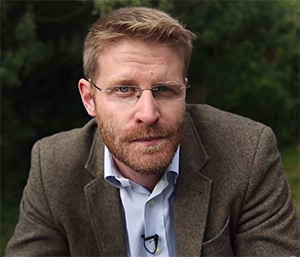- Uncategorized
Lecture Capture and the ‘I Was There’ Factor
 I was privileged to give the keynote presentation at the recent Panopto conference held at Senate house in London. The focus of my talk was on the importance of creating a feeling of connection between education institutions and their students in digital environments. For me, if used elegantly, video lecture capture can play a key role in this.
I was privileged to give the keynote presentation at the recent Panopto conference held at Senate house in London. The focus of my talk was on the importance of creating a feeling of connection between education institutions and their students in digital environments. For me, if used elegantly, video lecture capture can play a key role in this.
Education, especially higher education, is increasingly moving online. This includes face-to-face courses which, for very good reasons around providing greater efficiency and flexibility, are using web-based platforms to deliver elements of the curriculum. However, this is often done with a ‘broadcast’ mentality where the web is merely used to make a range of course-related resources available – essentially making the web just another distribution channel for content. Students can now complete significant amounts of their course without leaving the house which, while extremely convenient, runs the risk of isolating students both socially and intellectually. This is particularly true for less affluent students who perhaps can’t travel to campus for anything other than key lectures as they attempt to balance study with work or childcare commitments.
The ‘personified’ nature of lecture capture – especially when it includes video of the professor delivering the lecture – can help to mitigate this sense of alienation. However, it’s not just a sense of connection with a lecturer that students like, but also the fact that students remember that they and their friends were actually there. For example, comments on Twitter from Aston University students about Aston Replay (their name for Panopto) indicate that students find it quite fun to hear themselves asking a question in the video capture of a lecture they attended. One participant on the student panel at the conference even admitted that they scrolled through the video of a lecture to hear themselves ask a question then went back to the start to review the whole session. Even if students sometimes feel slightly embarrassed hearing themselves back on a recording, there is still a sense that ‘they were there’ – a feeling that they were part of something specifically designed for them. Along with fellow researchers I helped to coin the word ‘Eventedness’ to capture this feeling. It refers to the extent to which something you are engaged with feels like it is situated in a particular moment in time. Face-to-face lectures – even if they aren’t always pedagogically brilliant – are highly ‘Evented’ and can create a real sense of belonging for students. This is why the introduction of technologies like lecture recording haven’t been accompanied by a mass exodus from the lecture theatre – students want and need to feel part of a cohort.
The feeling of belonging students get from going to a physical lecture can be extended into the digital by providing students with the specific lecture they themselves, or their friends, attended. It’s a good example of creating a sense of connection via technology rather than inadvertently holding students at arm’s length or making them wonder why they paid fees for content generated in previous years. Building this kind of connection can be extended further by using lecture capture to give feedback on assignments or giving students access to create and share videos of their own to demonstrate professional skills. We heard examples of these approaches being used as integral parts of courses during the conference, with academics like Dr Jeremy Pritchard from the University of Birmingham discussing some of the ways he is innovating his teaching practice using video, something that has previously been detailed in his case study.
Using the technology to create connection, rather than just simply to deliver content efficiently, redresses the balance in situations where face-to-face sessions are in short supply. In an era of MOOCs and an abundance of freely available learning resources, a feeling of belonging is a crucial part of the institutional educational ‘offer’. Using video lecture capture can play a key role in nurturing or maintaining that sense of connection, helping to re-humanise online learning.
You can read more from David at his website: daveowhite.com.
If you’re interested in how Panopto can help you create a sense of connection with students, even outside of contact time, you can request a demo or ask for a free trial.


